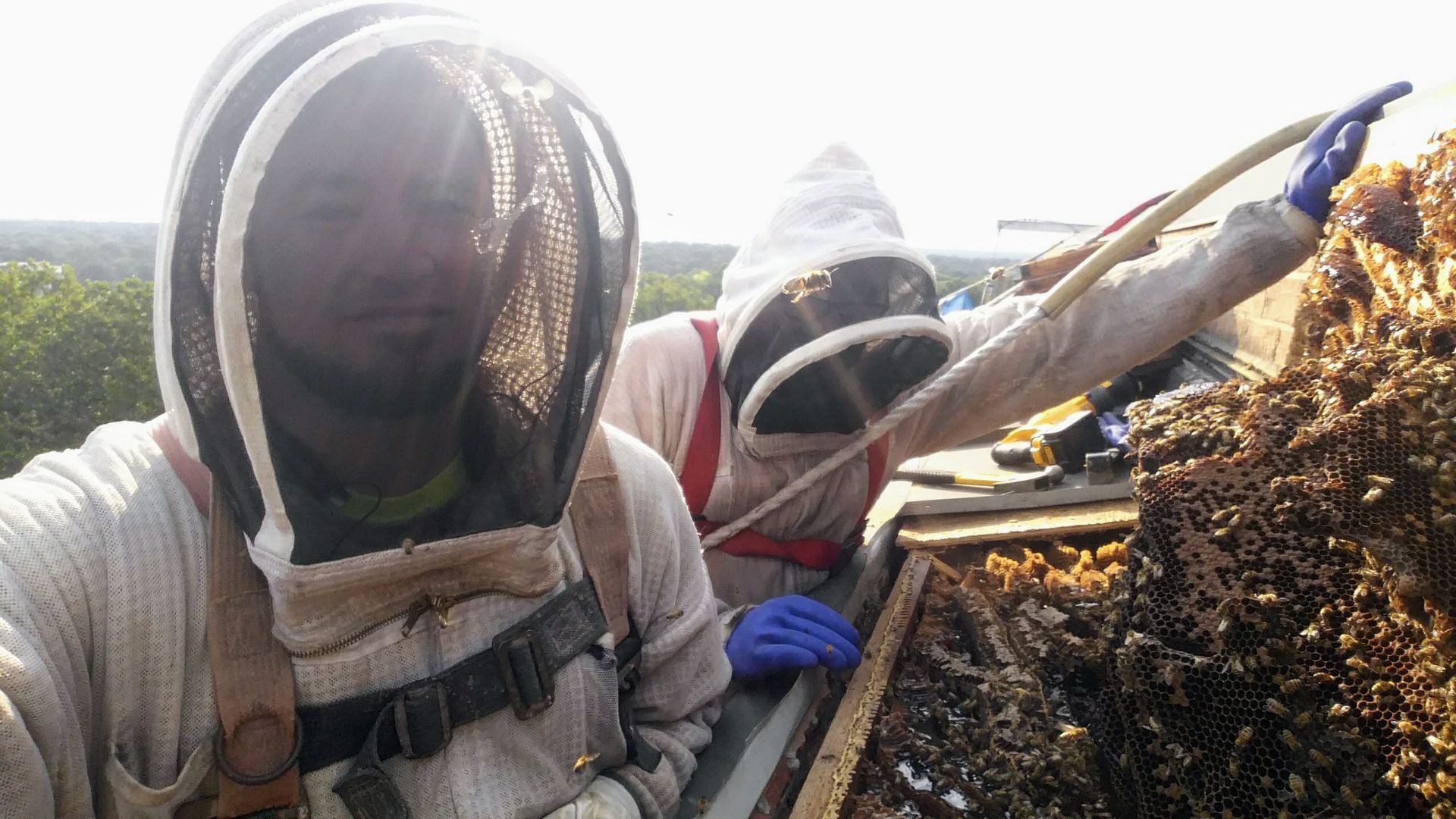Serving Missouri's Kansas City Metro, and the Surrounding Areas
We get stung so you don't have to.
Honeybees
Midwest Bee Removal
Honeybee Swarms
Honeybee swarms can form and settle on a structure or tree branch in a surprisingly short amount of time — often within an hour or less. These swarms are temporary and typically move on within 24 to 48 hours. Removing them during this time is often the easiest and most cost-effective approach, although unfavorable weather like chilly or rainy conditions may delay their departure.
While swarms are generally docile and less likely to sting, they will defend themselves if provoked or mishandled. It's important to approach swarms with caution, even though their primary focus is finding a new home.
Established Honeybee Colonies
A healthy, established honeybee colony is marked by continuous activity at the hive entrance during daylight hours, with worker bees flying in and out as they collect nectar and pollen. These workers often return with small orange or pale yellow "dots" on either side of their body—this is the pollen they’ve gathered. The entrances to established colonies are commonly found between floors or between the top floor and the attic in homes or structures.
Professional removal is essential for safely addressing both swarms and established hives. If left unchecked, colonies can cause structural damage and the bees may become more aggressive over time. Removing them with care ensures the safety of both the bees and the surrounding area. Contact Midwest Bee Removal with any additional questions.
Learn More About
Midwest Bee Removal
Serving Kansas City Metro, and the surrounding areas. Midwest Bee Removal specializes in the removal and control of honeybees, wasps, hornets, carpenter bees, and more. Up to 10% off for military and senior citizens. Offers commercial beekeeping services. Same-day appointments. Call us today to schedule.
Serving Area
The Kansas City Metro Area
and surrounding areas
Business Hours
- Mon - Sat
- -
- Sunday
- Closed
Emergency services may be available, please call for more information.





Share On: